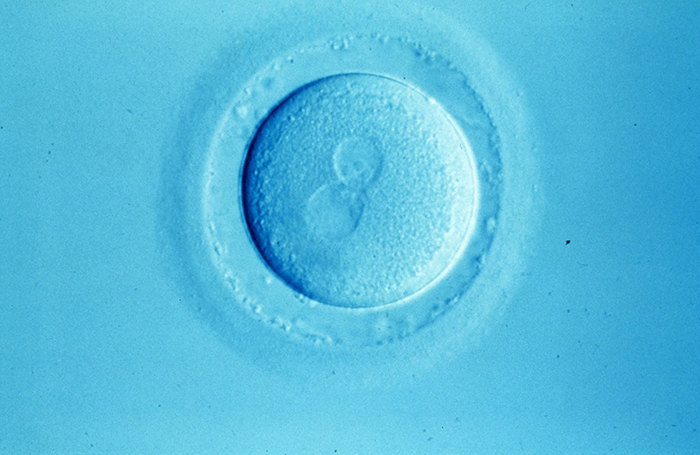Colorized scanning electron micrograph of newly fertilized human egg. Alan Handyside, Wellcome Images
Primary ovarian insufficiency (POI) is a rare medical condition, but devastating.
“The diagnosis is generally unexpected and is one that is difficult for clinicians to deliver and for patients to receive,” says Cynthia Stuenkel, MD, a clinical professor in the UC San Diego School of Medicine and a board-certified internist and endocrinologist.
Writing in the latest issue of The New England Journal of Medicine, Stuenkel and co-author Anne Gompel, MD, PhD, head of Gynecology-Endocrinology at Port Royal Cochin Hospital and a professor at Universite Paris Cite, describe the case of a 23-year-old woman eventually diagnosed with POI and treatment options.
Simply put, POI occurs when a woman’s ovaries stop functioning as they should before age 40. Prevalence is approximately 1% in the United States and 3.7% worldwide, but there is significant variation among ethnic groups. POI leads to compromised fertility and a reduction in systemic estrogen. It’s associated with consequential development of osteoporosis, cardiovascular disease and possibly accelerated neurodegenerative aging.
There are many possible causes of POI: genetic, autoimmune, exposure to toxins, metabolic disorders, infectious diseases and iatrogenic — illnesses caused by a medical treatment, such as chemotherapy.
No proven treatments yet exist to restore normal function to a woman’s ovaries, but there are treatments for some of the symptoms and health risks of POI: hormone replacement therapy, calcium and vitamin D supplements, in vitro fertilization (for women seeking to become pregnant), exercise and diet to improve bone and cardiovascular health.
— Scott LaFee
“The diagnosis is generally unexpected and is one that is difficult for clinicians to deliver and for patients to receive,” says Cynthia Stuenkel, MD, a clinical professor in the UC San Diego School of Medicine and a board-certified internist and endocrinologist.
Writing in the latest issue of The New England Journal of Medicine, Stuenkel and co-author Anne Gompel, MD, PhD, head of Gynecology-Endocrinology at Port Royal Cochin Hospital and a professor at Universite Paris Cite, describe the case of a 23-year-old woman eventually diagnosed with POI and treatment options.
Simply put, POI occurs when a woman’s ovaries stop functioning as they should before age 40. Prevalence is approximately 1% in the United States and 3.7% worldwide, but there is significant variation among ethnic groups. POI leads to compromised fertility and a reduction in systemic estrogen. It’s associated with consequential development of osteoporosis, cardiovascular disease and possibly accelerated neurodegenerative aging.
There are many possible causes of POI: genetic, autoimmune, exposure to toxins, metabolic disorders, infectious diseases and iatrogenic — illnesses caused by a medical treatment, such as chemotherapy.
No proven treatments yet exist to restore normal function to a woman’s ovaries, but there are treatments for some of the symptoms and health risks of POI: hormone replacement therapy, calcium and vitamin D supplements, in vitro fertilization (for women seeking to become pregnant), exercise and diet to improve bone and cardiovascular health.
— Scott LaFee
